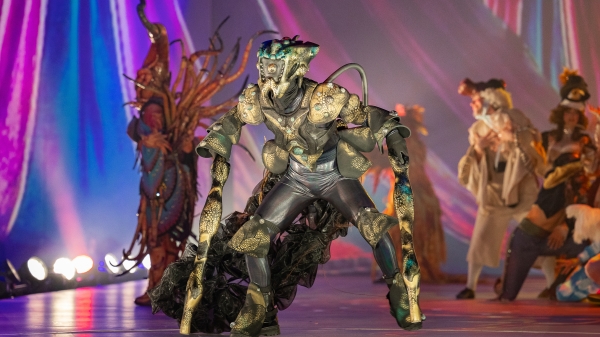How the winter solstice influences holiday folklore

Jeffrey Cohen, a medievalist and the dean of humanities in The College of Liberal Arts and Sciences at Arizona State University, said many holiday stories are rooted in the winter solstice.
Many children in the U.S. grow up hearing holiday stories of Santa Claus bounding through the skies with a fleet of reindeer and a bundle full of presents. But that’s not the only character created for this time of year. Societies around the world have been forming stories around the winter season for millennia.
Jeffrey Cohen, a medievalist and the dean of humanities in The College of Liberal Arts and Sciences at Arizona State University, said such stories are rooted not only around the holidays themselves, but in the time of year they occur.
“The tradition of Santa Claus is founded in stories about Saint Nicholas, a boy saint known for creating miracles,” he said. “St. Nicholas Day occurs earlier in December; that’s why stories like Santa have become associated with Christmas.“
As folklore about St. Nicholas and Santa Claus developed around the world, a slew of nefarious characters were created alongside them.
Over the last few years, figures like Krampus — a horned goat-like creature in Central European folklore who terrorizes children — has garnered global popularity. Cohen said the struggle between good and evil is an integral piece of stories throughout European folklore. So how did the theme become central to so many of early Europe’s seasonal tales? Cohen said one reason leads back to an annual occurrence in the natural world: the winter solstice.
Jeffrey Cohen
“There's a long tradition of darkness around Christmas and Saint Nicholas that goes back all the way to medieval stories,” he said. “The winter solstice is, of course, the longest, darkest night of the year, so as it happens society is in the midst of anticipating more sun to come, for brightness and spring to come — it's hard not to think about what gives us good cheer, but also what terrifies us.”
Cohen said one example is the story of Père Fouettard, a medieval butcher who captures and kills three young boys in a village in France. Upon learning what Fouettard has done, Saint Nicholas intervenes to resurrect the children and subsequently saves the day.
“That’s a classic case where you see Saint Nicholas doing good by resurrecting the boys, but it's terrifying that children were taken in the first place, and that's an equal part of the story,” he said. “Of course there’s also more modern examples like the Grinch. He’s terrifying, depicted as the worst kind of creature, but in the end he goes through a transformation — in many ways that’s a figure who encompasses both facets.”
But not all holiday stories are about good characters and their counterparts. Juan Gil-Osle, a Spanish professor in the School of International Letters and Cultures, said one example is Olentzero, a coal-mining, mountain-dwelling figure in Basque folklore who descends from his mountain home each year on Dec. 24 to play tricks on people in towns and villages. Today, the arrival of Olentzero is celebrated with citywide festivities that signify the end of winter and the beginning of a new season.
“Olentzero is a coal miner who comes down just once a year, he signifies a wild trickster, and he’s just one example, there are many more like him for this time of year,” he said. “Maybe it’s something in our collective consciousness.”
The winter solstice also features in Native American cultures. David Martinez, an associate professor in The College's American Indian Studies program, said many communities see the seasonal change as an expression of renewal for the natural world and as a chance to describe their place within it.
"Winter solstice typically marks the time when many Indigenous communities tell their Creation Story," he said. "It's also a time when the animals are asleep and the earth is dormant, awaiting the coming spring when life is renewed. Consequently, the Creation Story is a ceremony through which the world is brought to life anew."
For Cohen, the myriad stories created around the end of the year serve as a reminder of our collective humanity, and how traditions develop over time.
“We are always picking up different traditions and absorbing them,” he said. “Even the most basic act of placing a wreath on the door, it’s a kind of symbol of infinity and time going around. I think these are deeply human feelings and desires that just get clustered around the winter solstice celebration and the beginning of something new, no matter how we celebrate it.”
More Arts, humanities and education

ASU student finds connection to his family's history in dance archives
First-year graduate student Garrett Keeto was visiting the Cross-Cultural Dance Resources Collections at Arizona State University…

ASU alumna makes her way back to the ASU Gammage stage for '¡azúcar!'
As the Los Angeles-based CONTRA-TIEMPO dance group prepares for its upcoming production “¡azúcar!” at ASU Gammage, for one member…

ASU FIDM professor wins international award for fantastical, sustainable creation
The horror of an ailing Earth inspired an Arizona State University fashion professor to create a fantastical garment out of…
